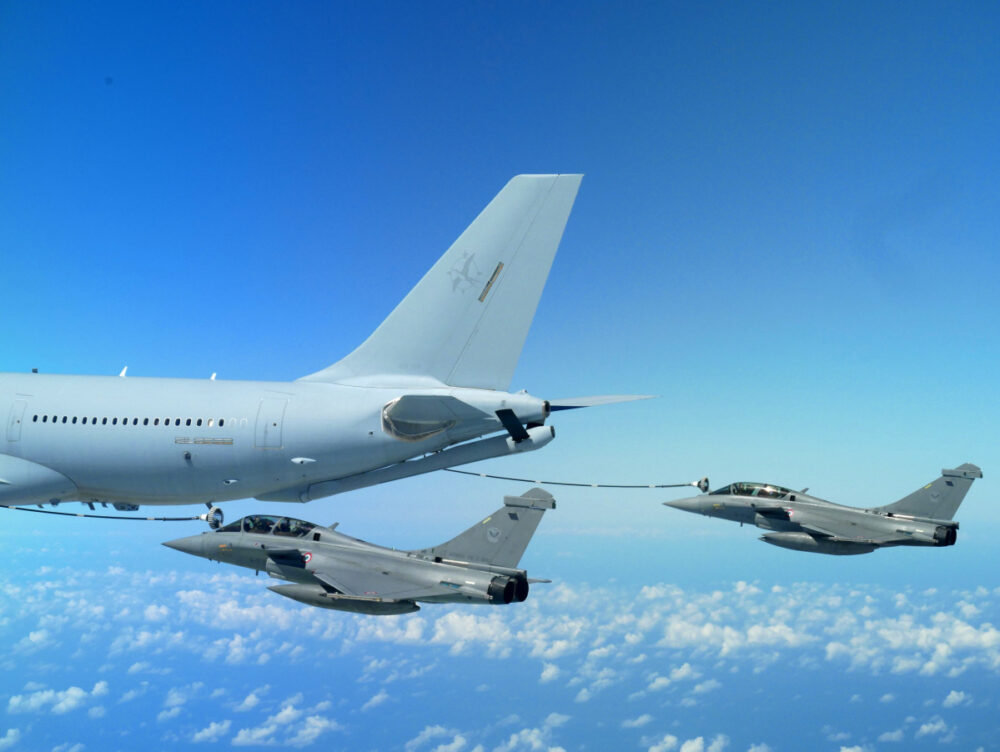Peter Layton turns his attention to the extra-regional players: The United States, United Kingdom, and France in this second part of the three-part series, exploring Indian Ocean air power.
Indian Ocean air power involves more than just the littoral states discussed in the first post of this series. The most impressive of the extra-regional air power states, the United States (US), has been deeply engaged in the northwest Indian Ocean for several decades. There are major US bases in Bahrain, Diego Garcia, Djibouti, Kuwait and Qatar, complemented by bilateral arrangements with several other Indian Ocean littoral states. The US can readily deploy significant air power across the Indian Ocean.
American air power can be sea- or land-based. Three to four carrier battle groups are generally available for global deployment at short notice: in 2001-2002 three operated in the northern Indian Ocean supporting air operations into Afghanistan. Each carrier can operate between 70-90 fixed-wing aircraft and helicopters. On land, the United States Air Force (USAF) can rapidly deploy large numbers of combat aircraft into the Gulf region; some 400-500 were deployed there in 2001—although placing similar numbers elsewhere in the Indian Ocean region would be problematic. Few large air bases are available, and there are considerable access constraints imposed by many Indian Ocean countries. However, small numbers of unmanned MQ-9 Reaper remotely piloted aircraft have operated from bare bases and civilian airfields in northeast Africa and adjacent islands to surveil and attack terrorist groups in Somalia and Yemen.
Please click here to read the full “Indian Ocean air power: Extra Regional Air Forces” article published at The Central Blue, written by Griffith Asia Institute Visiting Fellow, Dr Peter Layton.








